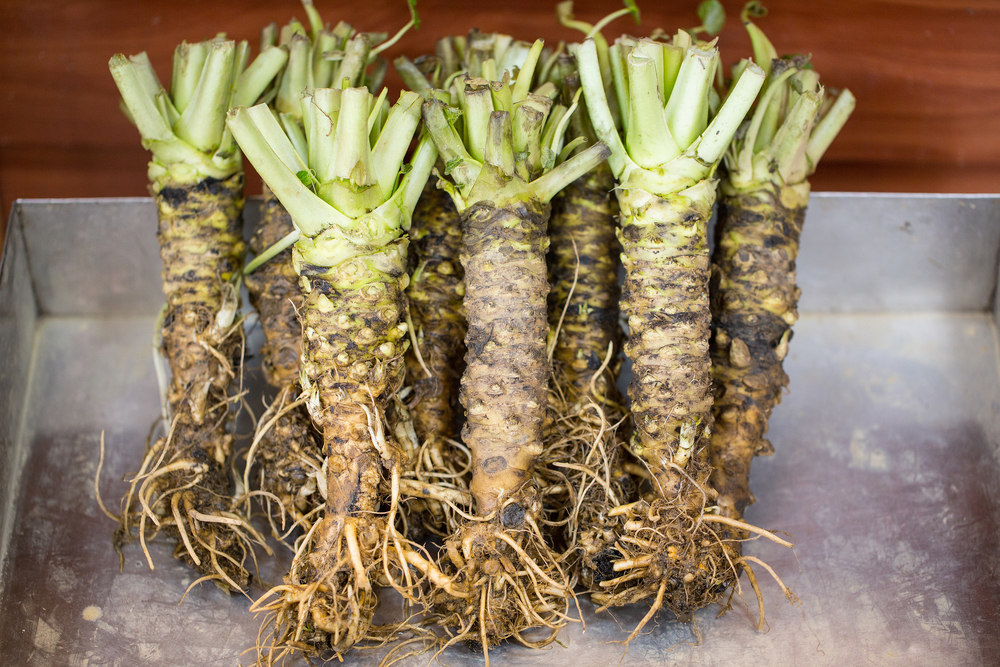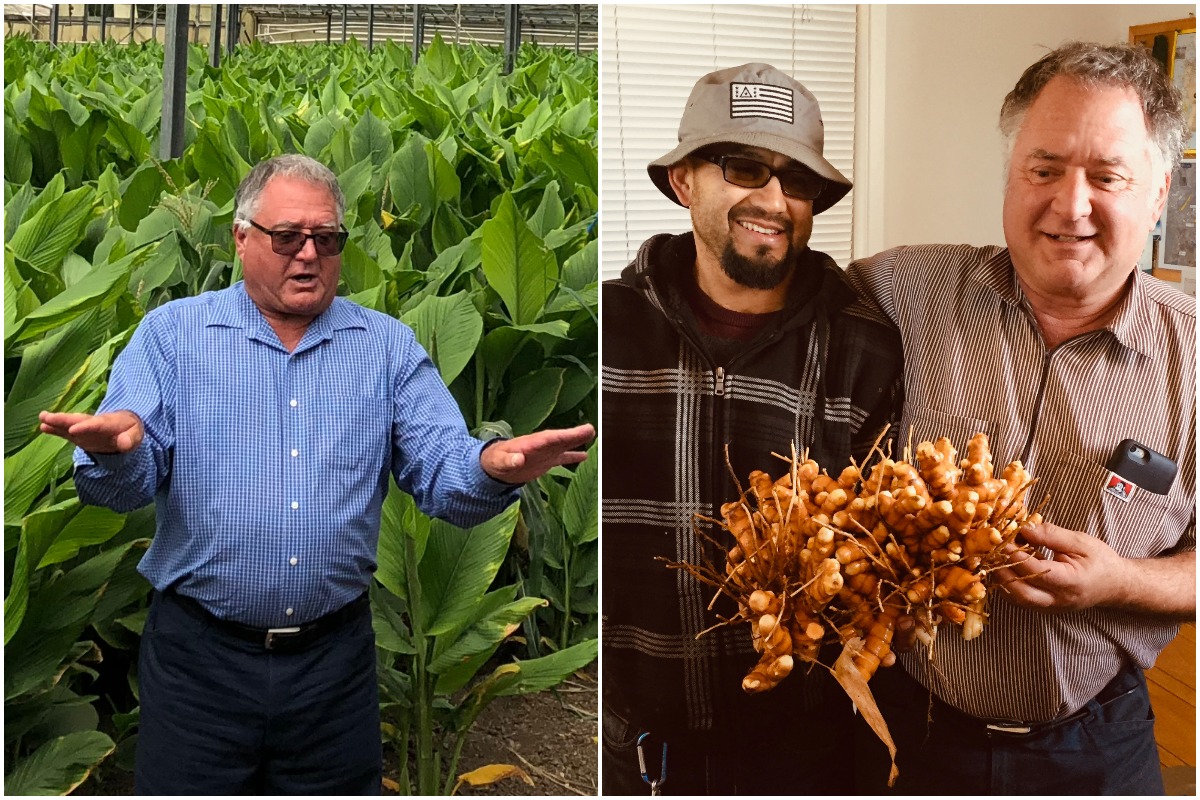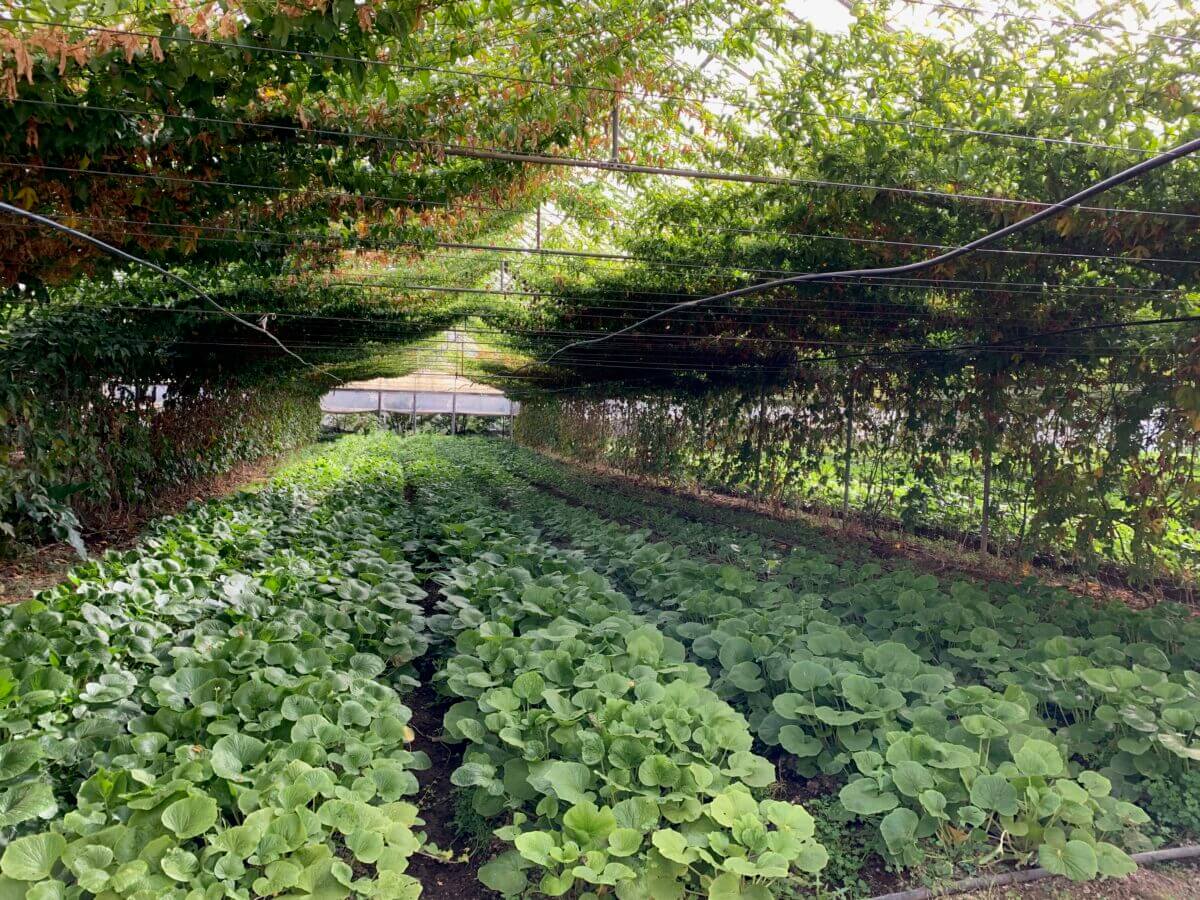With climate change threatening supplies of Japanese wasabi, farmers like David Blume are planting new opportunities for the crop.

David Blume isn’t just a farmer. He’s an artist, author, teacher and a self-described mad scientist. The “farmer in chief” of Whiskey Hill Farms in Watsonville, California has made a concerted effort to keep learning throughout his life and to always chase adventure. “You can get into a rut with farming,” Blume says.
To ensure that doesn’t happen, he’s never gravitated toward growing commodity crops like corn, soybeans or barley, instead favoring specialty crops such as turmeric, lemon cucumbers and galangal. But that comes with its own risks. “Every time you plant a crop, you are literally betting the farm. If you have a crop failure, it’s gone. Your whole farm,” says Blume. “We farmers can be thought of as high-stakes gamblers.”
On his 14-acre organic farm, Blume focuses on poly cropping, the concept of growing two or more crops at one time to harvest, introducing regenerative and permaculture practices while still prioritizing that ethos of adventure. Greenhouses cover eight of those acres. He’s devoted part of one greenhouse to tropical conditions, growing 200 different fruits in what’s become a mini-rainforest. He’s even added taller trees and plants to provide natural shade rather than relying on shade cloth over the greenhouse itself. This helps to mimic the ecological regions of his plants. Another greenhouse is dedicated to sugary and starchy plants in various stages of fermentation, which later get distilled into alcohol. He also raises algae to feed the fish and lobsters in ponds along the farm. The byproduct of each process in turn serves another function on the farm, like using water fertilized from the fish to irrigate crops.

David Blume and farm manager Hector with the farm’s turmeric crop. Photo courtesy of Whiskey Hill Farms.
One of mad scientist’s more successful recent plantings is wasabi, which he researched extensively before testing it out on the farm last February. “It’s often called the hardest crop in the world to grow,” says Blume, who wasn’t deterred by that fact. “When I heard that, man, I just had to try it.”
Blume grows Mazuma, one of the four main cultivars of wasabi. In Japan, no variety of wasabi is as revered as Mazuma, grown for its enlarged rhizome and prized for its intense flavor and creamy texture. But most Americans never get the chance to experience the real deal.
According to the Washington Post, up to 99 percent of all wasabi in North America is fake. The little ball of green paste in your bento box or in the package that accompanies your takeout sushi is almost certainly not wasabi. It’s often horseradish mixed with food coloring and occasionally a touch of the real stuff. Actual wasabi is less spicy, with a herbaceous heat that fades quickly, and is often grated fresh at the counter by a traditional sushi chef.

David Blume grows wasabi and passion fruit in the same greenhouse. Photo courtesy of Whiskey Hill Farms.
Japan’s wasabi harvest has declined by close to 55 percent over the last decade, owing to a combination of environmental factors and the innate challenges that come with growing it. Climate change has brought on rising temperatures, which leads to increased risk of fungal disease and pests. Extreme weather events like typhoons and extreme flooding have ruined wasabi fields.
With a wasabi crisis brewing in Japan, growers in other countries are stepping in to fill the void. A handful of farmers like Blume are taking a crack at cultivating the crop stateside, giving Americans the chance to get a taste of local wasabi. But it’s a finicky plant to grow just right. It can take up to 36 months to be ready for harvesting, “which means you have a long period when things can go wrong. Diseases or bugs,” Blume explains. “You have to have a pretty good system to control all that without it being overwhelming.”
[RELATED: 5 of the Most Valuable Crops You Can Grow in the US & How to Grow Them]
Because it’s so difficult to grow, Blume is able to fetch up to $150 per pound for fresh wasabi. And with a yield of approximately 20,000 pounds per acre, assuming everything works well, that’s a pretty great return on the time investment.
Although he’s in his 60’s now, Blume shows no sign of slowing down. “[Farming] is such a diverse set of skills that you acquire over time. You can’t beat it. You’re never bored being a farmer,” he says. “You might be stressed, you might be anxious, you might not have money at times, but you’re never bored. And mad scientists never want to be bored.”
Can one order some Wasabi from him online?
You’re so awesome! I don’t believe I have read a single thing like that before. So great to find someone with some original thoughts on this topic. Really.. thank you for starting this up. This website is something that is needed on the internet, someone with a little originality!